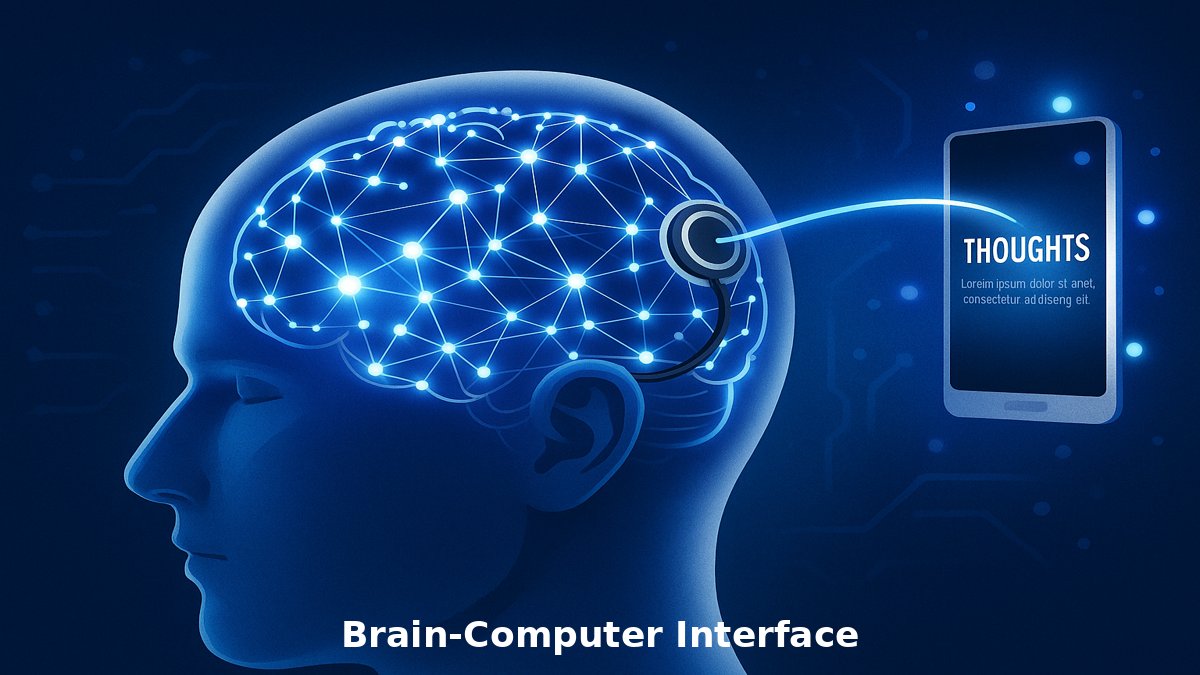A brain computer interface (BCI) is a revolutionary technology that enables the human brain to connect directly to machines, and it’s advancing rapidly. Neuralink, Elon Musk’s brain chip start up, aims to lead the revolution, allowing our brains to potentially connect to the cloud.
Is your brain prepared to be online? Neuralink’s brain chip could likely transform you into a walking computer.
🧠 Brain Computer Interface: The Tech Powering Elon Musk’s Vision
The brain-computer interface (BCI) is the driving force behind one of the most groundbreaking technologies of our time that has moved from science fiction to reality and is rapidly progressing. BCI’s main function is to help the brain communicate to any computer or device. In simple terms, brain computer interface is a technology that converts signals produced by the brain into commands that are sent to a computer or device, which doesn’t require speech or touch; it simply uses thought.
BCI was originally developed to provide assistance to persons with paralysis, however, brain computer interface technology has now entered a new chapter. And it has the world’s attention, especially Neuralink, Elon Musk’s ambitious brain interface technology driven by the philosophy of combining biology with AI. Recent studies, including one from Stanford and another by the NIH, have shown that brain implants can enable paralyzed patients to control devices or even speak using their thoughts. This showcases the growing real-world potential of brain-computer interfaces.
🟣 brain computer interface are the gateway to a future where our thoughts may become actions, instantly and wirelessly.
🚀 Neuralink’s Vision: Merging Human Minds with the Cloud
Neuralink hopes to install a small chip on your skull, referred to as the Link. The Link is used to detect brain activity using ultra-thin electrodes and sends data wirelessly. So far, Neuralink has successfully demonstrated a monkey playing Pong with its brain and recently submitted an application for human trials which was approved by the FDA.
💪 Pulse Insight: Imagine thinking “Turn on the lights” and your smart home responds—without a word or motion. That’s the power Neuralink is building toward.
Their vision: communicating with others telepathically, controlling devices with thoughts, and connecting your mind to the cloud for long term memory storage or cognitive enhancement.
🟢 In this world, your brain becomes your password, your controller, and your internet browser—all in one.
Studies like this one in Nature demonstrate how BCIs can decode brain activity for communication.
🔍 5 Real-World Benefits of Brain‑Computer Interface (BCI)
- 🧠 Restore Speech for Paralyzed Individuals
A recent NIH research demonstrates how a brain computer interface enabled a fully paralyzed stroke patient to speak naturally, decoding brain signals into fluid sentences - 📡 Direct Thought-to-Text & Digital Control
A Nature Neuroscience study showed that BCIs can decode “neural handwriting” from brain signals, spelling out text in real time—paving the way for thought-to-text typing. This breakthrough demonstrates how thoughts could be transformed directly into digital text, paving the way for seamless brain computer interface communication - 🧩 Memory Improvement in Cognitive Conditions
USC Viterbi researchers are developing ultra-thin polymer brain implants that improve memory in Alzheimer’s and dementia patients—showing real gains in memory retention - 🦾 First-In-Human Wireless BCI Implant
The University of Michigan’s Connexus BCI recently achieved the first wireless, in-human recording, which could lead to mobility and speech restoration with fewer wires and lower risk - 🎤 ALS Patient Gains Voice Back
A text-to-speech brain computer implant restored natural voice and tone in an ALS patient—achieving 32 words per minute at 97% accuracy, according to a Reuters report
Also read our post on CRISPR Gene Editing to explore similar mind-blowing innovations.
📅 Neuralink Timeline: Milestones at a Glance
| Year | Milestone |
|---|---|
| 2016 | Neuralink founded |
| 2020 | Pig brain interface demo |
| 2021 | Monkey plays Pong using brain chip |
| 2024 | FDA approves human trials |
| 2025 | First human implant underway |
📊 Quick Fact: Your brain generates enough electricity to power a small LED bulb. Neuralink wants to convert that brain energy into actionable data.
🧠 Final Thoughts
The brain computer interface is no longer a concept of science fiction; it’s a developing reality that will change the way we think, communicate, and live. With companies like Neuralink and similar organizations reaching developments across the spectrum, the gaps separating mind versus machine shrink. Whether it’s communication disorders and restoring spoken speech or time-stamping memories, or the ability to connect our brains right into the cloud, the possibilities of brain computer interface devices through ethical guidelines and final technological mechanisms are hopefully almost countable and predictable.
As we move forward, with the development of ethical guidelines and technological barriers, we will purposely choose how this life-altering technology fits and functions within our everyday lives.
If you’re fascinated by brain computer interface technology, Neuralink, and the future of neuroscience, stay connected with us at Science Pulses—where science meets tomorrow.
Frequently Asked Questions
A brain computer interface (BCI) is a communication system that connects the brain to external devices, such as computers or prosthetics. It bypasses physical movement and enables control using only brain signals.
Neuralink’s brain chip uses ultra-thin threads implanted into the brain to record neural activity. This data is interpreted by an external system to allow functions like movement, speech, or device control using thought.
Neuralink received FDA approval in 2024 for human trials. Initial reports show promising results with minimal complications, but long-term safety data is still being collected.
Some BCI systems have shown potential to stimulate memory and enhance cognitive function. Research is ongoing, and these applications could soon support conditions like Alzheimer’s or brain fog.
Experts suggest that brain-computer interfaces may eventually replace certain smartphone features, enabling users to send messages or browse the web using only their thoughts. But mass adoption will take time and trust.




